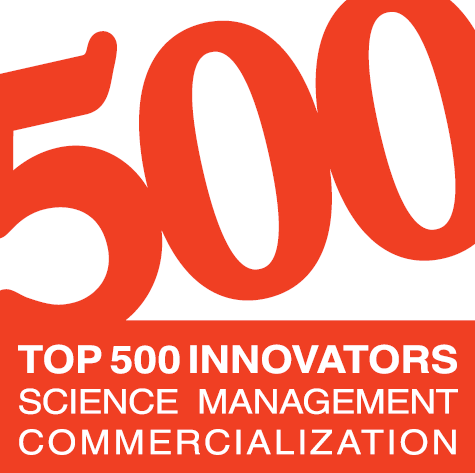30-07-2015 Creativity inside - Day 20, part II
The afternoon's workshop we spent, among others with Mireya McKee, visiting Launchpad in Oxford. This project supports the cooperation between the Skoll Centre, Entrepreneurship Centre and the local business school area. Launchpad is meeting place dedicated to students, academics, entrepreneurs. Here people could exchange information, gain inspiration, broaden horizons, to share knowledge and ideas, develop technologies, learn new skills, get advice and what is most import meet new people, who are the lifeblood of science and technology.
After inspiring workshop we belief that creativity and work in an interdisciplinary environment is the success basis. Charged with positive energy we go back to St. Catherine's College, where as every evening waiting for us workshops in i-Teams groups. Interesting things will happen!
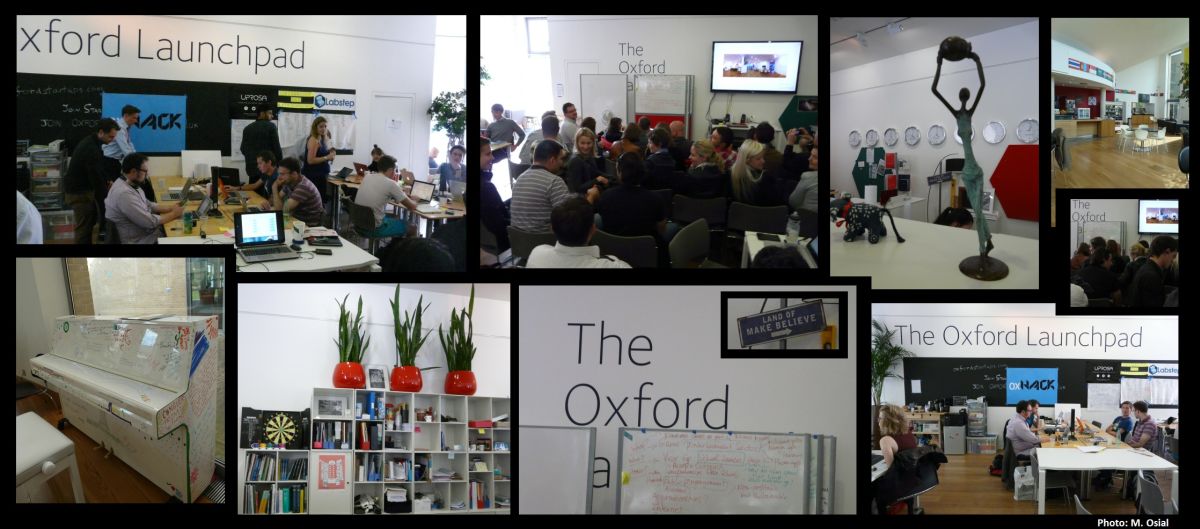
30-07-2015 Open or not? - Day 20, part I
Today's workshop was placed at Saïd Business School. The spent there hours helped us answer to one of most important question: what is an "open innovation". The "open innovation" term was first introduced by Henry Chesbrough, who said that: „Open innovation is a paradigm that assumes that firms can and should use external ideas as well as internal ideas, and internal and external paths to market, as the firms look to advance their technology”, “The use of purpose inflows and outflows of knowledge to accelerate internal innovation, and expand the markets for external use of innovation, respectively”.
We could say that main open innovation assumption is proper selection of skills in technology transfer process at the appropriate implementation stage with using of numerous technological assumptions and innovative solutions coming from other scientists and entrepreneurs. In other words, creating a functioning ecosystem based on owned knowledge and university employees, entrepreneurs, research funding agencies and other units cooperation.
Today we have learned how to spread business wings and lead to the optimal company development, how to acquire open ideas, how to carry out simulations and modeling business, how create maps and networks to simulate processes and technology development. Besides the strategic planning of effective management, defining objectives and milestones, the most important thing is to build deep relationships and trust. The most important investment are people. It is all about the people. And without the cooperation open innovation idea would not exist. We still have a long way to implement that idea in our research and projects. But our knowledge and accumulated energy will help us. And changes are coming soon.
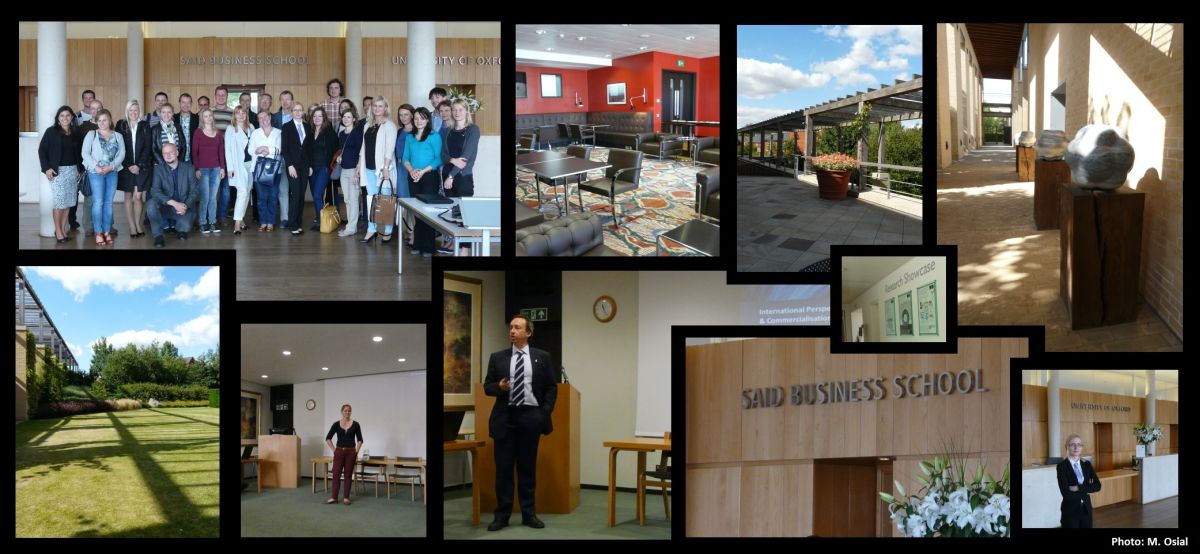
29-07-2015 It's burning... First Technology Parks Challenge - Day19, part II
After intensive workshops we arrived at the Magdalen Centre in Oxford Science Park. We could see there how important soft skills, self-improvement and persistent objectives pursuit in applications research are. We met scientists and entrepreneurs whose ideas and development determination helps to achieve the top. Today's visit was an inspiring lesson and will stay long in our memory.
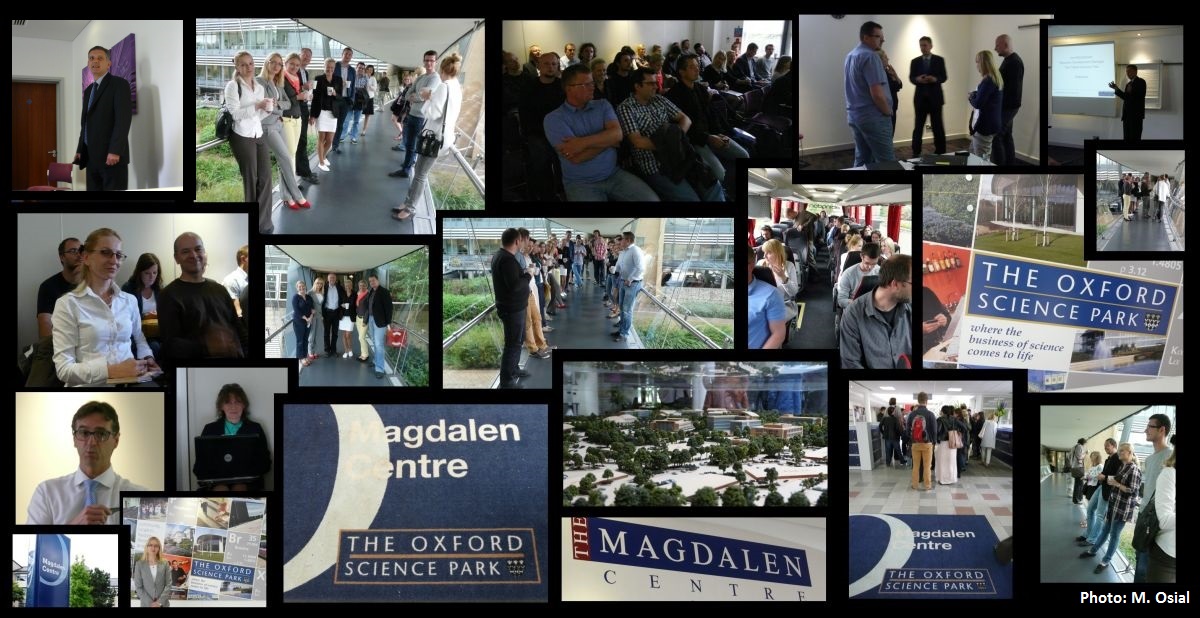
29-07-2015 Consult or not consult? - Day 19, part I
Implementation of the product on the market seem to be easy. However to achieve the success a lot of hours of conversations about "where we are now and where we going” and a different ways or possibilities are needed.
Professional consultation can solve a lot of problems. On today's lecture, with the help of professionals cooperated with the University of Oxford, we try answer on question ”is it whether or not to go this route and use the academic consulting?” Considering various criteria, we analyzed many examples. We cannot forget about intellectual property protection, finance sources, trust, competition, market analysis, and many other key issues that everyone of innovator should quickly master. As scientists, we must look after the intellectual property, have in mind the conflict of interest, as well as to consider whether and with whom we share the profits.
On the end of a day we have realized that the road to success is full of pitfalls and we should make friends with the Technology Transfer Centre, then our life will become easier.

28-07-2015 To be or not to be? - Day 18
Lectures are getting more and more interesting. Daniel Stachowiak form ISIS Innovation conducted today a workshop to improve the technology transfer in Poland. But before we came into potential ways to make changes in our homeland we have learned how they do it here in Oxford. We got to know with detailed plans of implemented here commercialization. We learned more not only about ISIS Innovation, but also about other deployment systems in the world. It must be said that despite the growing financial resources for this purpose, Poland is still one of the weakest countries in terms of innovative implementations in Europe. We compared the acceleration process of deployments in the world and financial outlay from the public, private and external sources. We checked what the ‘survival rate’ of companies in the early stage of development is. We also analyzed the factors affecting the risk of company failure at the various stages of its development.
If we want to succeed surely many changes await us... To inspire confidence, we must strengthen the brand and for that we need to be patient and persistent player in attracting investors. We also need a flexible approach to changes and closely watch the market and new trends. It is important to learn from the best and carefully analyze the failure of other companies to learn from others' mistakes rather than make our own. A constant search for cooperation and development paths are waiting for us... We won’t avoid procedures to protect the intellectual property rights (although You should not be afraid of them), we will also see (here some surprises) that lawyers are also human, and the investor has nothing to with piranha… If we had to somehow summarize this day we would write something like this: electrifying pace of development is shared by 0.01% of innovative firms. In other cases it is necessary to be patient, patient and patient again. But success will come.
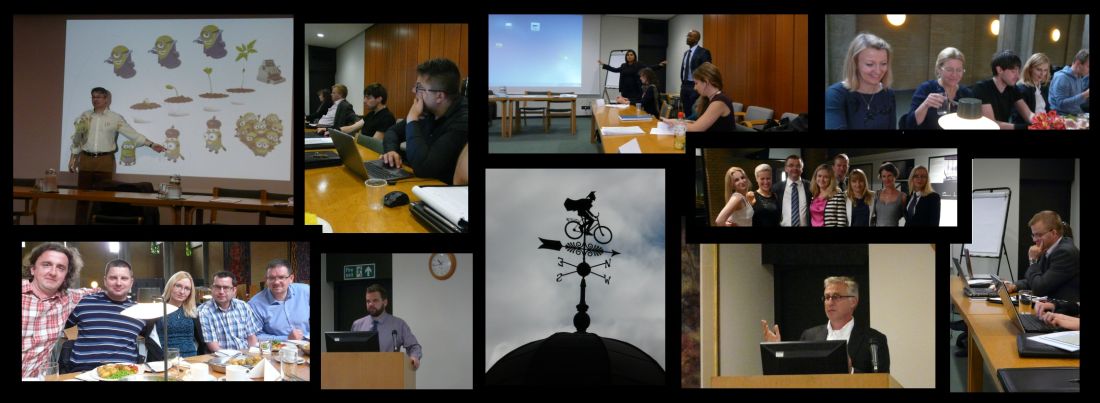
Dinner with Coordinators in Oxford - Day 17, part II
Today, we have a special evening, i.e. gala dinner with our project coordinators in Oxford. Once again, we had an incredible networking opportunity, this time with specialists from ISIS Innovation. The evening was full of inspiring conversations. We also learned about local University and Centum Technology Transfer history and more details about upcoming workshops.
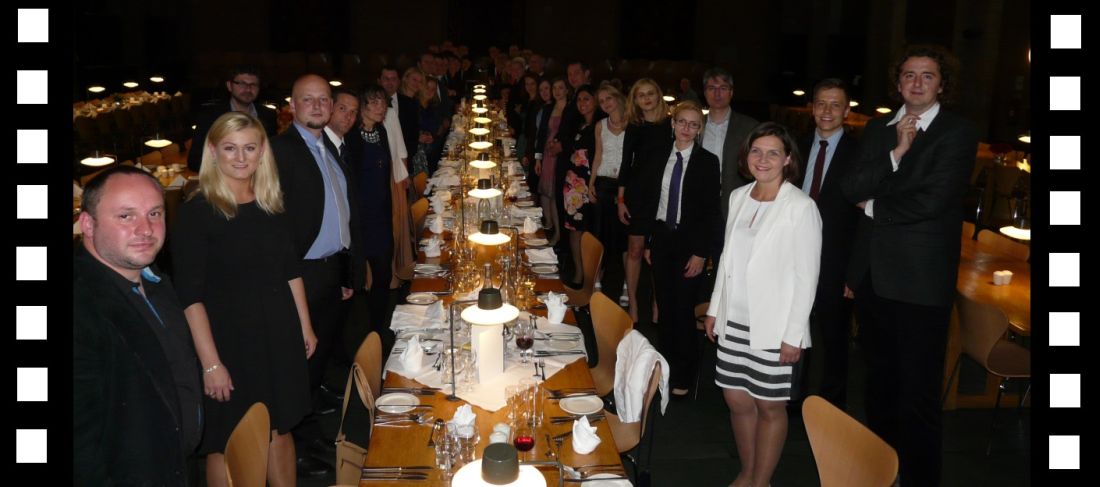
27-07-2015 First steps - Day 17, part I
We started the third internship week in Oxford. We will stay here for two and a half weeks, while classes are held mainly in St. Caterine College. This is the one of the youngest college at Oxford University. At the destination place the Isis Innovation, i.e. Oxford Technology Transfer Center, organizers has waited for us (i.a. Tom Hockaday, Steve Cleverley, Tim Hart, Mireya McKee, Nathan Pike). This company closely cooperates with Oxford Technology Parks and surrounding areas. ISIS Innovation is not only technology transfer, intellectual property protection, assistance in patent procedures, help in establishing spin-offs and companies, but also consulting, services and cooperation with business. But starting from the beginning. The day began with discovering the Oxford University structure. In the next step we have learned how ISIS Innovation took its first steps in Oxford and how innovation is developing in many research areas like medicine, social sciences and humanities sciences (oh yes!), natural sciences or sciences including chemistry, physics and mathematics. Once again, we realized that the essence of innovation is not raising new funds for research, but the impact on society by making available technology or invention.

After a historical introduction, information about the ecosystem and infrastructure of the Oxford University, and many useful information about research results commercialization came time to present our ideas developed so far in Cambridge during i-Teams projects. Each group has selected a representative, whose task was to convince the audience for this technology or invention in ten minutes. This happened not without emotion. Each presentation was recorded. According to this we have the opportunity to improve presentation skills devoted to the audience. In a few days we will be viewed recordings and compared them with the next one. We will evaluate the projects progress and prepare for the next one. The day ended with a nice accent: a gala dinner in the organizers Team company.
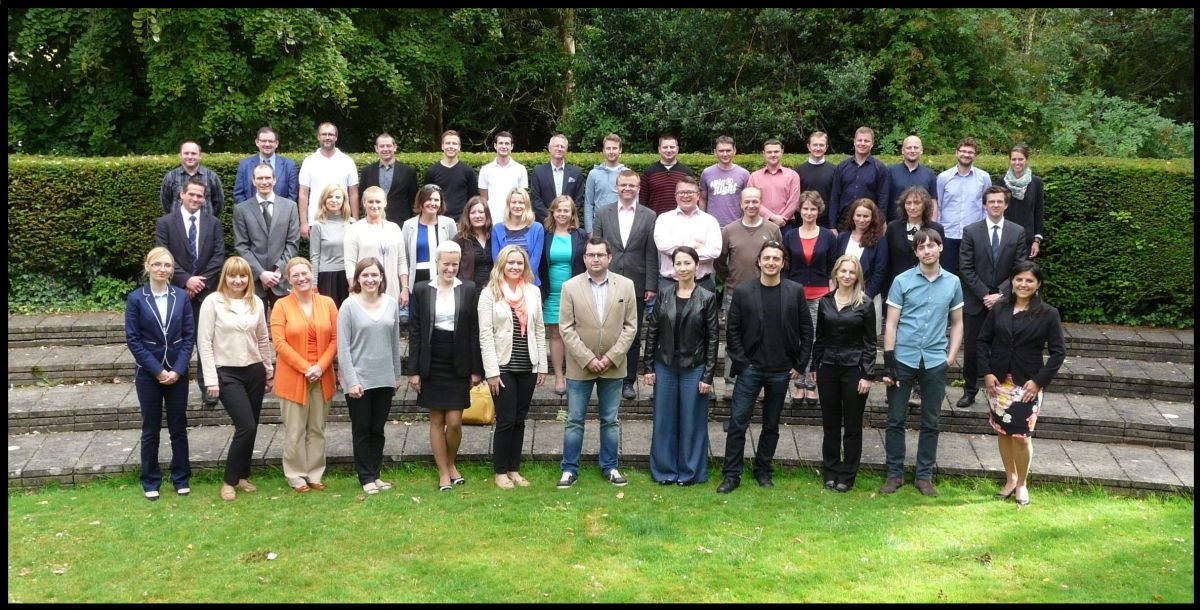
26-07-2015 On the way... - Day 16
Today awaits us the last breakfast at Fitzwilliam College. Then express packaging, bicycle expedition around the Cambridge and waiting for the unknown. Two weeks were enough to make us feel at home in Cambridge, but now time to Oxford, where we will explore research results commercialization secrets and will be trained in other new areas. The laughing bus, because only this word can describe the atmosphere inside reached St. Catherine's College. Our destination point, where we will live for the next two and a half weeks. Later that afternoon we set off to explore the city corners as mysterious as the Cambridge town. Behind us a few hours the "wandering" in Oxford. We were looking for perfect shots and the college, in which famous scene from Harry Potter movies and the boat trip was shot ... Finally, the world belongs to the brave!

25-07-2015 Goodnight chatting - Day 15, part II
In the evening we expected on the new Participants, who today began their adventure with TOP 500 Innovators in Cambridge. And what about us? Tomorrow we will continue our adventure for almost three weeks at Oxford and our roads during this time will spread, but ...today 75-five innovators from the farthest Poland corners have the unique opportunity to meet together in one place. The double innovative invasion in the UK has been started today!
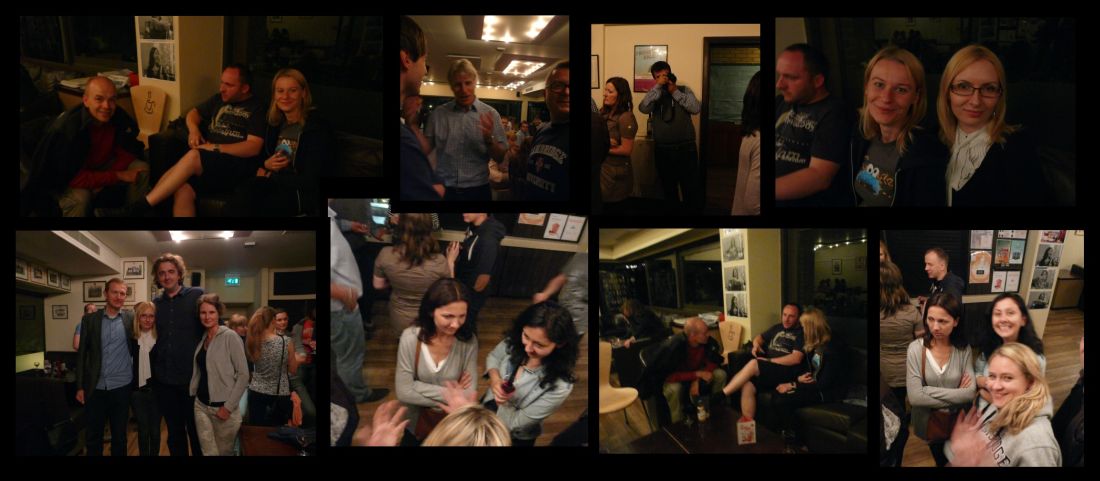
25-07-2015 Toller from Ely - Day 15, part I
In sunny morning the bus take us to Ely, beautiful and charming town near the Cambridge. In this little town contain England - famous cathedral, whose origins construction are dated on the year 672. This cathedral was build by the Bishop of Ely and for centuries it was served as a monastery. The cathedral status has been assigned 437 years later. Every year the cathedral is visited by more than quarter million of visitors. All of them could see on their own eyes what is hidden inside, because this inconspicuous- looking building hides many secrets. With admiration for engineers from before ages we climbing on tower. The octagonal tower, symbolizing the eight canons and whose construction took three decades. From the cathedral roof we admired the view on surroundings and looking the farthest point on the horizon. Apart from, inside of the cathedral is stained famous glass museum, in which some exhibits dating back to the beginning of the eleventh century of our era. Our story cannot show magic of this place, you must visit the Ely ourselves...
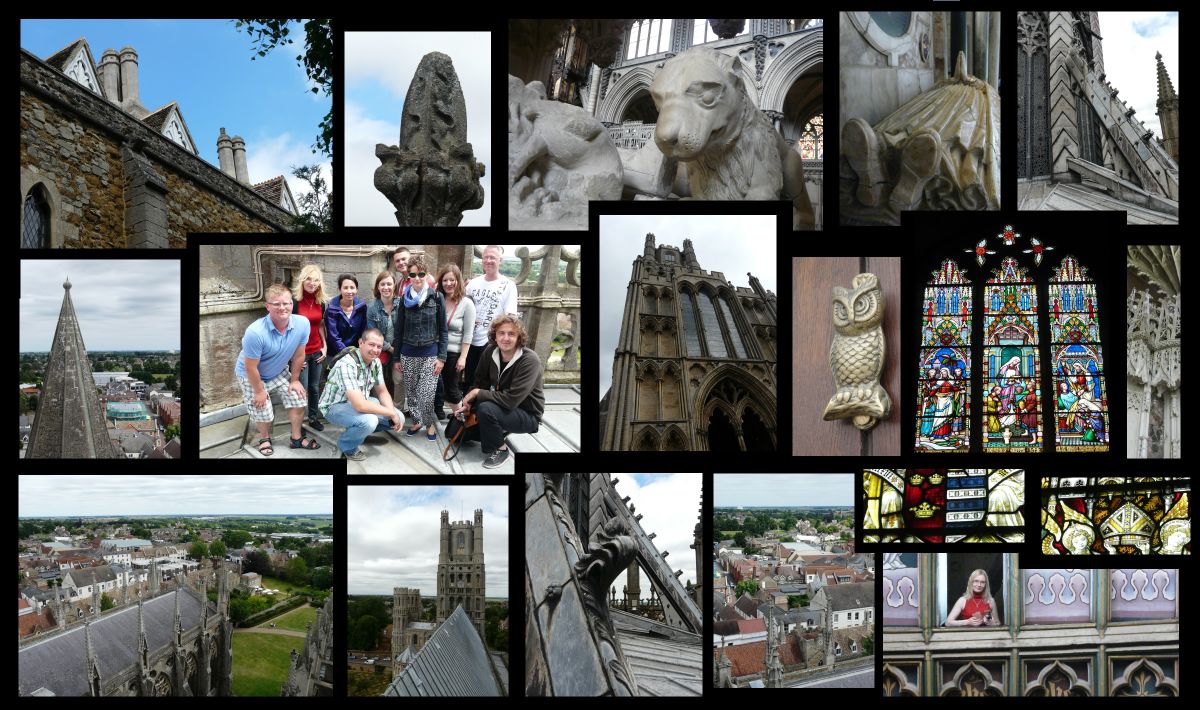
24-07-2015 Brainstorm - Day 14
Working on i-Teams projects is getting serious. In today's i-Teams classes we considered an individual approach to the customer and the investor.
What can we do to make sure that our product is competitive? How to convince the customers and investors that our product is not only cheaper, safer, faster, simpler, but also more efficient than others? We learned today how to convince them to our ideas, how to handle the market and at the same time save time, energy and capital. During the long brainstorming session we developed the perfect solution for our project and then we presented it in the public forum. We should remember that every i-Teams is developing its own technology, but despite the differences we all compete in the same race for success. Ahead of us there is a long battle between groups involved in the artificial ligaments, ecological gas, electricity saving system, the device that protects food from the premature development of bacteria, defrosting indicator and a device for medical diagnosis. The second week of the titans fight is behind us, however we already today present the continuation of our vision. 3 ... 2 ... 1 go!

23-07-2015 Effective management in London - Day 13
Another interesting study Visit behind us. Our target for this time was the Imperial College in London. Most blogs readers probably heard about this amazing college, if they do not, let us mention that this unit in all rankings locates always among others best universities in the world. There we were greeted by Nick Coutts, who was talking about the beginning of that research and teaching institutions. To become acquainted with Imperial College innovation management we get to know student and doctoral projects selection methods and start-ups evaluation. This is a crucial process in university functioning. Without proper "sifting" produced ideas and concepts procedure it is impossible to establish a thriving business, which is a key college issue.
Work on "live" cases showed us immensity of local scientists potential. In the next step we got to know the and analyzed local inventions. They all have one overriding goal: the society development. We had the opportunity to know inventions and projects implementation methods i.e. planning of further development, in particular, set ambitious, but achievable milestones. And all this magic operation will lead this us to find an investor. During this training, we have simulated processes, analyzed a numerous of examples and have become familiar with methods such as project management methods e.g. Kanban method and created strategic management matrix.
At the visit end we got to know the quality management map along with numerous success stories examples. And to avoid mistakes failed stories. Finally, one inventor give a short lecture about list of capture installations in the cities of carbon dioxide and producing biomass. This lecture caused in our group discussion on the practical invention usefulness. The time will show, if the right was the person providing the constructor enthusiasm or skeptics … Moreover, it may be worth mentioning that the University of Cambridge, the Imperial College and the Oxford University colleges are sometimes called “golden innovation triangle”. Today we met the second after Cambridge corner of this triangle.

22-07-2015 An egg and incubation - Day 12
Today we visited the Hauser Forum, place associated with start-up environmental in Cambridge. Everyone of us has heard about the business incubators. This organizations are designed to accelerate the growth and success of entrepreneurial companies through an array of business support resources and services that could include physical space, capital, coaching, common services, and networking connections (entrepreneur encyclopedia, www). Today, we acquired the knowledge about the role of incubators in creating, maintaining and building a business in the UK. It has long been known that people are the most important investment and without the people just even the best idea will not succeed.
How is the interaction between the product and society? How to monitor the system, and take the appropriate path of evolution of the idea? How to proceed to achieve success at a high risk of failure in the initial stage of development of the company? On all these questions we answered by analyzing entrepreneurs examples from the UK and from the world exploring, because the experience is the best way to learn. Also on this occasion, we know better Innovation Cluster in Cambridge, including knowledge with multiple algorithms helping to plan the next stages of development of the company to increase the likelihood of success. In addition, we met with the founder of ideaSpace which is located in Hauser Forum, Stuart McTavish . He told us about the beginnings of his entrepreneur’s activity on the further development and gave his recipe for success. Is this recipe will work in our case?
Time will show...

21-07-2015 A little bit about innovation - Day 11
Today we had the first study visit to the St. John's Innovation Centre where David Gill and Nicky Dee gave us some new insights on innovation. We received many valuable tips on how to improve existing products and the evaluation criteria for those that are newly introduced to the market. During the training, we evaluated the influence of various criteria on the revolutionary of the product. Holistic thinking about the product is not so simple… It is therefore necessary to analyze the organization of work and production mechanisms, the competence of associates checking, materials, suppliers and quality of equipment verification.
You also should plan to use the expert opinions, to develop contact with customers and to check the product distribution channels. Also, do not forget about forward-looking at the market. Almost at the end there is a brand, without which there won’t be any revolution in the market. And this is not the end. We need to check whether it is the right time to introduce a new product, the market must be ready for it.
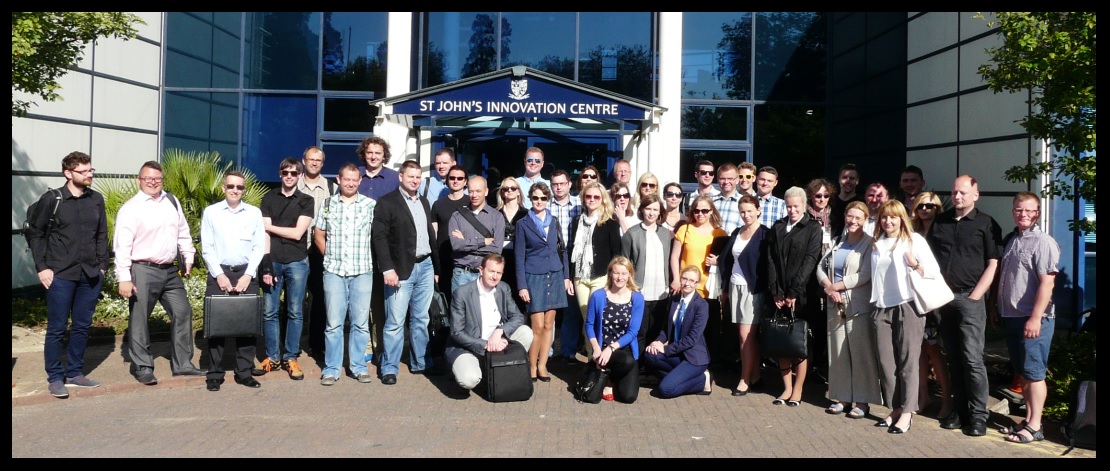
It would seem that about innovation nothing else can be said. Nothing could be more wrong!... even statistics are helpful. They tell us that the key factors are: time, the idea and a group of collaborators. For 200 developing companies the biggest factor determining success is the time (approx. 42%) and human capital (32%). Third in line is the idea (28%) and business model (24%), and the funds are in the far end (just 14%). During the classes our examples (case study) were products from the photovoltaic market. In particular, we discussed the changes in legal regulations in Poland, Great Britain and their potential impact on competition in the field of photovoltaic in the world. Today's dose of knowledge was massive.
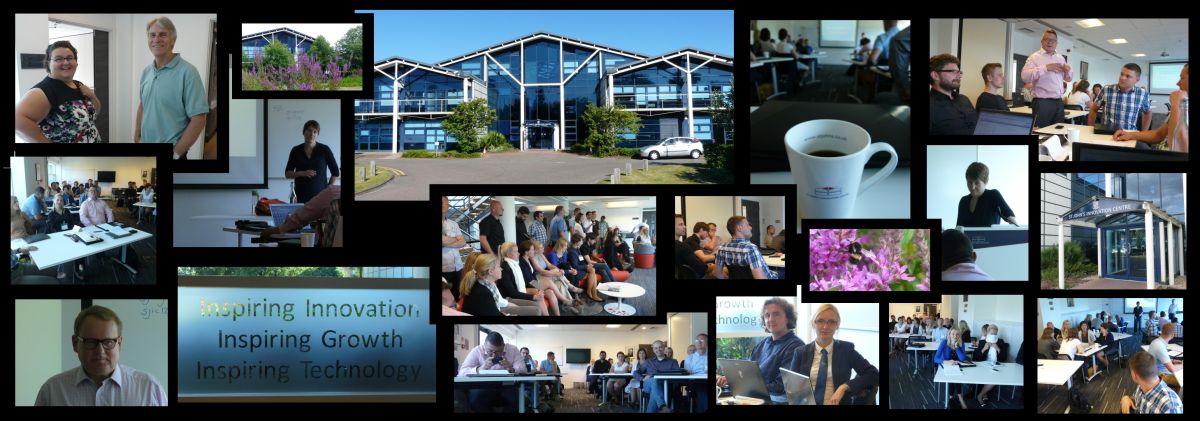
Loooooooong weekend - Day 10
During our internship on Top 500 Innovators some weekends were a bit longer. This intended operation enabled us to use extra time for additional work and visit some interesting places. We establish contacts with the big science world, entrepreneurs and business. We visit laboratories and offices. It would not be possible at the weekend.
Today some delegates have visited the laboratory, about which they could only dream. Today...others would meet potential project investors or Nobel Prize winner and others led teleconferences. In the evening we return to the Fitzwilliam College and cannot wait to meet all together at dinner to talk about amazing day we had, inspiring people we met and fascinating thinks we learned.
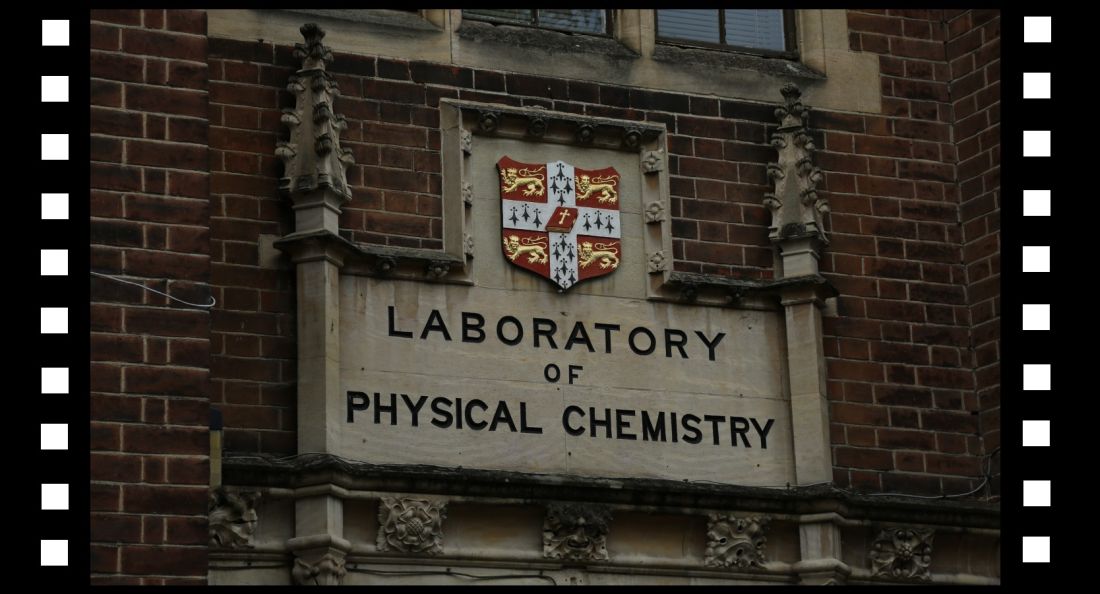
Five o'clock! - i-Teams and homework - Day 9-10
After the intensive exploration of this misterious island and the farthest corners of Cambridge it is high time to do i-Teams homework. Weekend is so short, however from time to time weekend may have even 72 hours. Thank to this extra time we may spread our wings and develope our i-Teams project as much as possible. Instead of boring the Readers we show the photo mini-gallery of the weekend’s i-Team meetings.

19-07-2015 Spread the wings - i-Teams by the sea - Day 9
We have started the morning with packing the equipment on a trip to the seaside town Hunstanton which is famous for its colorful cliffs. Hunstanton is an east coast town but faces west and is one of the few places on the east coast in England where the sun can be seen to set over the sea. Some of us went there by train or by bus, and others by car. Hunstanton is a small town located north form Cambridge, in the vicinity of the estate of Queen Sandringham House and its origins date back to the nineteenth century. Since the beginning of its foundation Hunstanton is a popular holiday place, and it is populated by less than five thousand inhabitants. The famous colorful cliffs and something about the terrain ... along the coast on the way to Old Hunstanton we could admire the cliffs. They have a height of about 20 meters and The height of twenty meters and very distinctive heterogeneous geological structure. The coastal cliffs include the type section of the Hunstanton Formation of lower reddish limestone which was laid down during the Lower Cretaceous. This is topped by a white chalk layer from the Upper Cretaceous epoch.
During the walk along the coast we stumbled on the hull of the Steam Trawler Sheraton. This boat was built in 1907 for fishing and was later used for boom defence work during World War I. It also served as a patrol vessel in WWII. During a gale in 1947 she broke free of her mooring and drifted onto the beach at Hunstanton. Much of the Sheraton was salvaged but the bottom of the hull remains on the beach in the intertidal zone.
Nature scientist requires solid preparation for each project so common trip was an incredible opportunity to exchange countless information on the history of Hunstanton, local legends or the geology of the whole area subordinate to Norfolk. Most importantly, it also shared the afternoon with an opportunity to calmly discuss the project and-Teams and explore the secrets of "networking"
As a seaside resort Hunstanton also has a lighthouse. This is a first lighthouse that was built of wood with an iron basket of burning coals as a light. Hunstanton lighthouse had the world's first parabolic reflector which was built here in 1776.
The nature of scientists requires solid preparation for each project so common trip was an incredible opportunity to exchange countless information on the history of Hunstanton, local legends or the geology of the whole area subordinate to Norfolk. But the most important it that we had all afternoon to calmly discuss the i-Teams projects and explore the secrets of "networking".
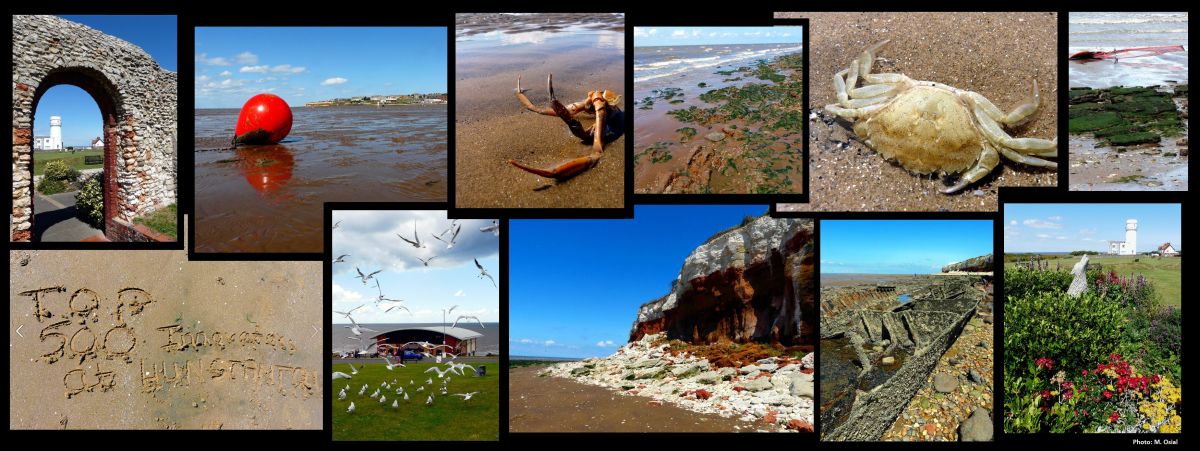
18-07-2015 Let's reach out where eyes can't see...- Day 8
We have started Saturday morning in Cambridge with an energizing breakfast at Fiztwilliam College. This magnificent place is located in the unusual garden heart, in which spread out rare flowers and trees. The green remembers at least several decades. Pleasing environment encourages to stay there and have a picnic on the grass. But our curiosity was stronger and we went on a trip around this amazing city.
The city name comes from the River Cam, which circumscribes between the city and connects both edges. This life pulsing river is covered with hundreds of boats and barges. After setting out form Fitzwilliam College, we crossed through the bridge and saw a street market, where you can find not only vegetables, but also local artists' crafts.
Streets were covered by tourists’ throngs. All are crazy about this amazing place. Cambridge is an academic town and according to tradition, it is recommended that all students live not farther than 2 miles from theirs colleges. As a result, the town has become not only a learning space, meetings or inspiration place. It is a place that cannot be forgotten. Hundreds of history years clad walls of thirty-one colleges leave an irresistible desire to stop time and stay here forever.
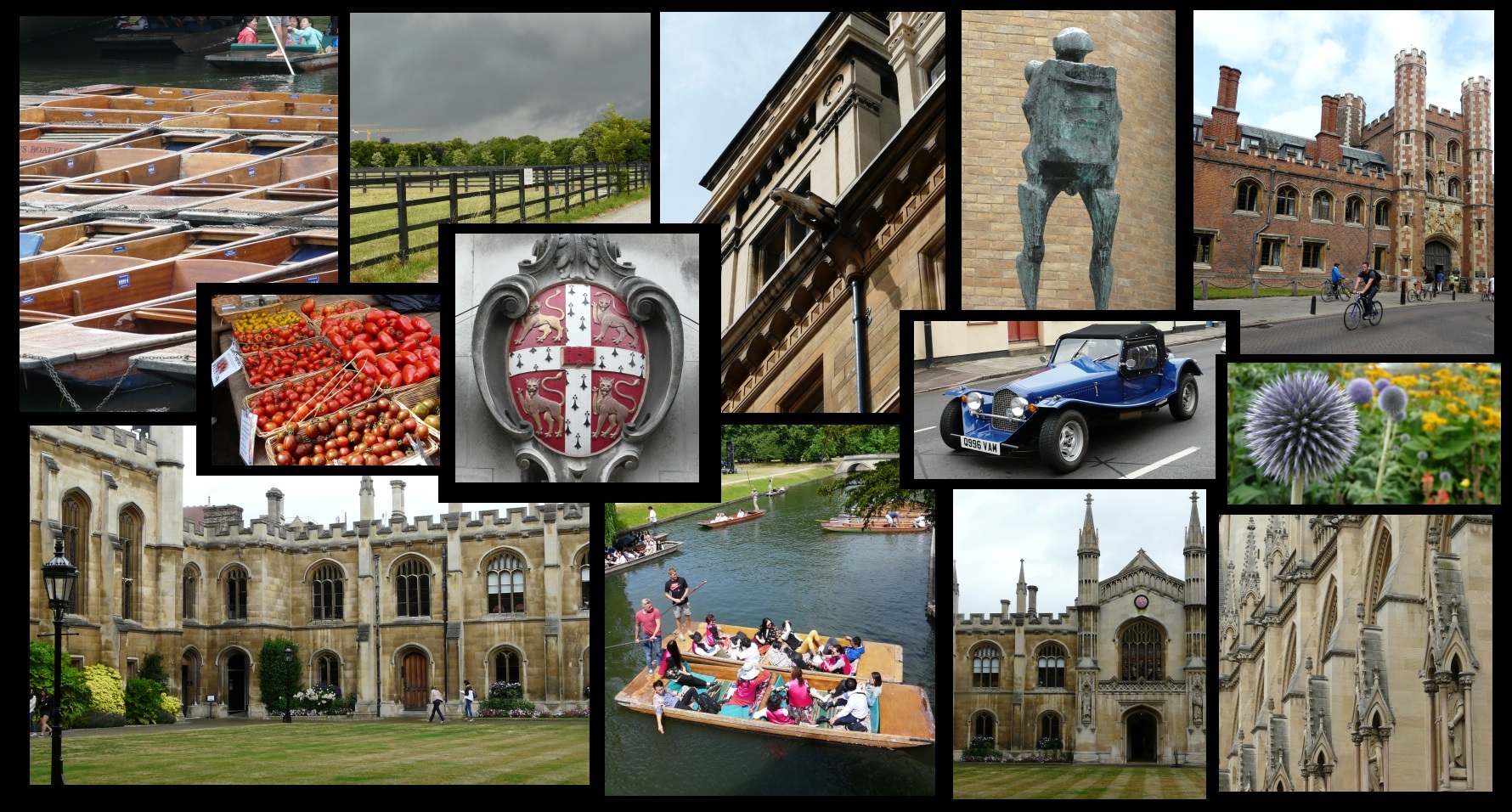
17-07-2015 Dinner with Organizers - Day 7, part III
After the intensive day about English system of education and commercialization we spend the evening on gala dinner with Cambridge project coordinators. The most important at the dinner time was the possibility of networking. The meals were also delicious. Among the participants were Paul Seabright - Deputy Director of Cambridge Enterprise, Marie Georghiou. Paul Seabright propose a toast to the delegates of the “Top 500 Innovators” program. The atmosphere prevailing during the meeting encouraged to conduct interesting and inspiring conversations.
Tomorrow we start the i-Team's adventure. What does it mean ?? We will write soon ..
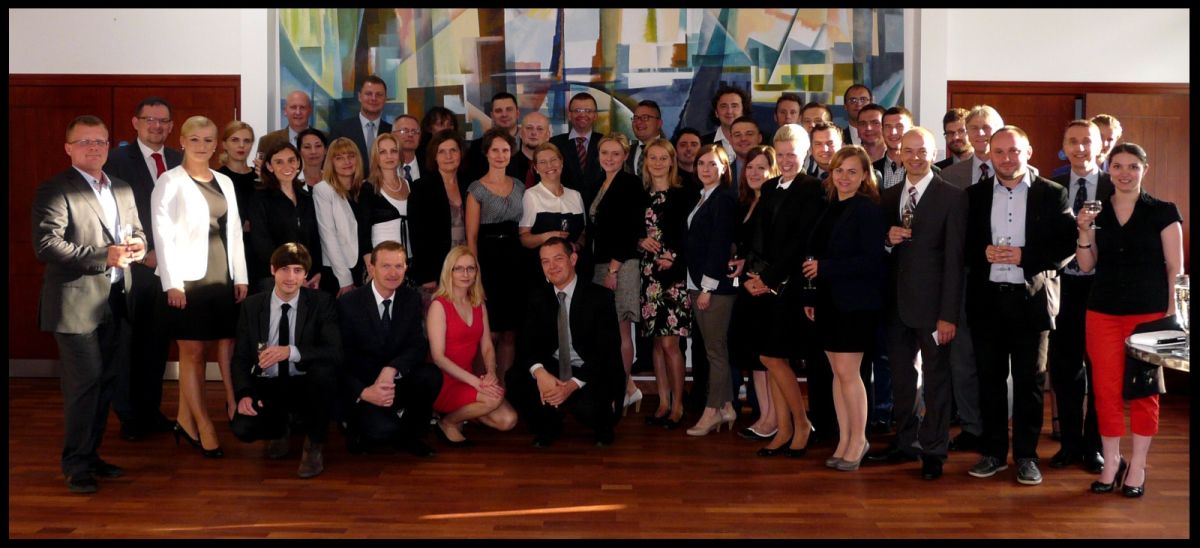
17-07-2015 i-Teams and what's next? - Day 7, part II
i-Teams project is not a game and todays afternoon session helped us to get used to it. In the nearest days we need to get in touch with companies, researchers and technology transfer offices to talk about our projects. We already know that if we want our project to be positively received by investors, besides of its substantive content and innovativeness, the way that we will present the idea is very important. We all need to improve our soft skills. Sounds easy? Only for the moment when we realize that for the investors attention (and admittedly...money) competes a lot of people. It is easy to drop out at the very beginning….
And then with help came Katie Bardes. With her guidance it will be much easier to establish and maintain contacts with the industry. What? Who? When? How? Where? How many? For what? Why? The essence of the problem lies in what is the precise formulation of our product and to whom it is directed. If these questions do not give a precise answer, the commercialization of our research results will fail.
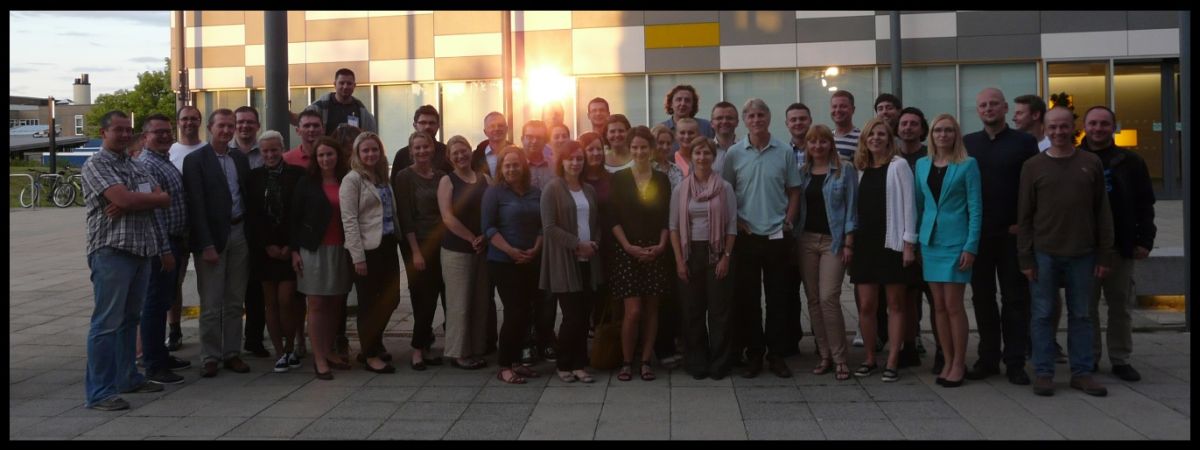
17-07-2015 Interdisciplinary research projects competition - i-Teams - Day 7 part I
We won’t probably have to convince Readers of this blog that creative project which is the commercialization of research results will probably be better performed by a team of specialists from different fields than by a group of like-minded and educated in the same field people. This is the idea of realized in Cambridge i-Teams program. They creates a maximum seven people teams composed of students, PhD students, doctors and people experienced in launching new technologies. Then, each of these i-Teams had to analyze for two weeks one of the newly manufactured at the University product (eg. biomedical tests for disease detecting).
The purpose of this analysis was to investigate whether this technology can be already introduced to the market, in particular if it corresponds to any special needs and of there exists any market competition. To date, during work in all i-Teams groups there have been carried out about 80 of such studies, and 30% of them resulted in the opening of new spin-out companies! On the other hand, in case of some technologies at the early stage, they were able to say that these products don’t have any market potential and it’s uneconomical to spend for them more time and resources. As a part of the TOP 500 Innovators program we also take part in the work of i-Teams. In our case form the 40 people group there was selected 6 teams. Each of them consists of people with different backgrounds and interests. Each of these teams will analyze in detail the Polish idea brought so they can present ready-made solutions to potential investors and/or customers in the future. A person that will introduce us to the world of i-Teams and will be our guide in this new ground for us is Amy Weatherup.
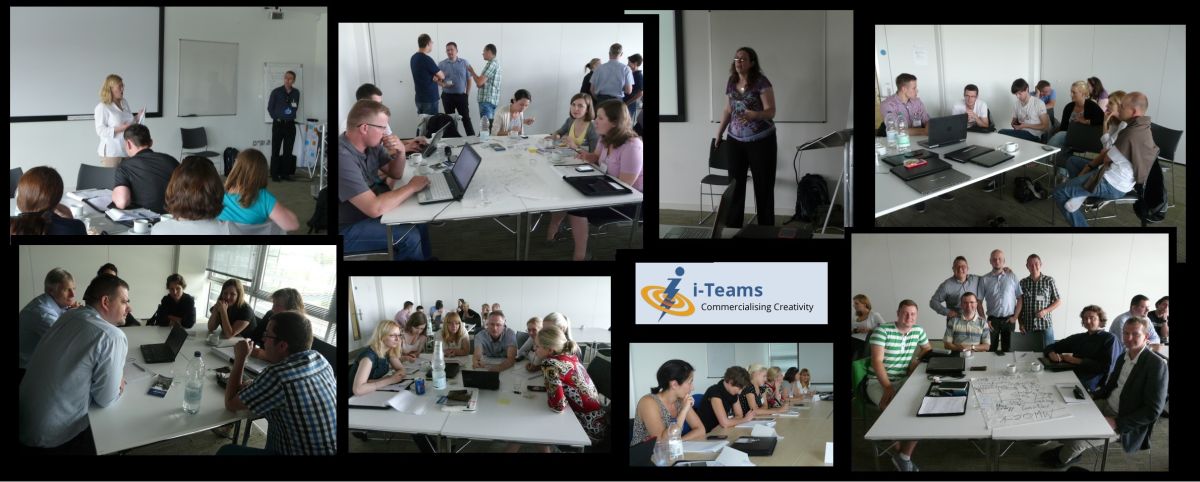
16-07-2015 Upstream - Day 6
Today's classes helped us to define the barriers that we have to overcome in the initial stage of operation and prepared us to face the next obstacle. An important highlight of the day was also motivating us to act and improve. Everyone has been evaluated individually and had their own feedback that helps us knowing what precisely has to be changed. The day can be summarized as follows: you could feel that there were 40 participants, each with different ideas and unique range of skills. The one thing that they all have in common is wanting to act.
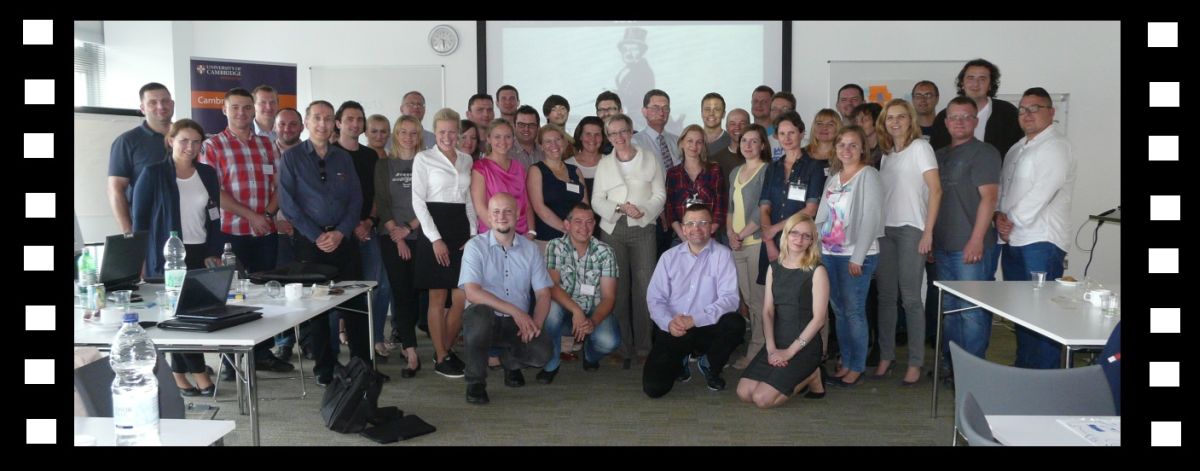
15-07-2015 Swimming with sharks - Day 5
Creating innovations and coming up with new ideas is very competetive and methods of work are not always ethical. Without adequate protection of their ideas scientist entering the market will be literally devoured (and in a very short time) by bigger and stronger players. Those people are possessing huge capital and distribution network companies, which very eager to take over someone else's idea and technology. Therefore, the protection of intellectual property is one of the main themes of the program TOP 500 Innovators and will appear in the next days.
Today was the first day that we familiarised with the themes and subjects. The hosts were Nessa Carey and Robert Marshall from Praxis Unico.. We learn different types of copyrights, patents and licensing, know-how and unfortunately planning the implementation of innovation, each of us must be well versed in it. Although the protection of intellectual property was not the only topic discussed today. Equally important was the issue of innovation. Can adhesive be innovative? Ofcourse, it can. In addition, sometimes even at first glance a failed adhesive may be an innovation, as in the case of 3M, which first failures in creating durable adhesive also turned into a huge success rynkowy- known to all sticky notes. But, as I said to Louis Pasteur, "Chance favors the prepared", so to the point: you have to plan ahead and define the demand in the market in an area in which we want to act! Today's training also helped in assessing at what point of the path was each participant on with leading to the implementation of innovations on the market. Without preparing a detailed plan and determing where we are going with it, it is not possible to overcome the difficulties.
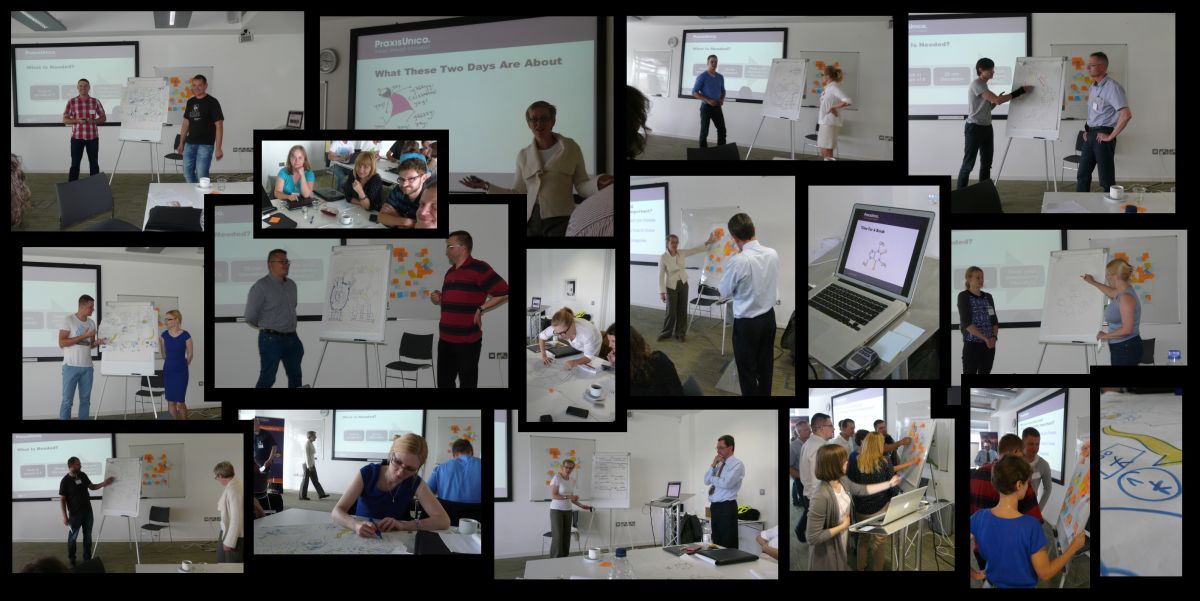
Exploring the Roadmappingiem - Day 4, part II
The first training in Cambridge was related to strategic problem-solving methods called roadmapping. We learned how to design a road map for attaining specific goals.
The essence of the method is based on three key questions: Where am I going? Where am I now? How I want to achieve it? Answering such questions we design business strategy, which in our case refers to the organization where we work. The project of such a strategy is based on the following elements:
• Identifying and prioritizing critical needs and trends in Polish universities
• Designing and ordering the list of possible opportunities and projects
• Identifying and prioritizing the required technology, capabilities and resources for the above mentioned projects and opportunities
• Choosing the best opportunities for selecting the potential for further development
• Identifying key opportunities and limitations on the way to the best choice
• Creation of a list of objectives and actions
With such a defined set of tools we can begin to act. We need to keep in mind that every traveler needs key moments to stop and check the itinerary. In this way, we guarantee that we will reach desirable destination on time.
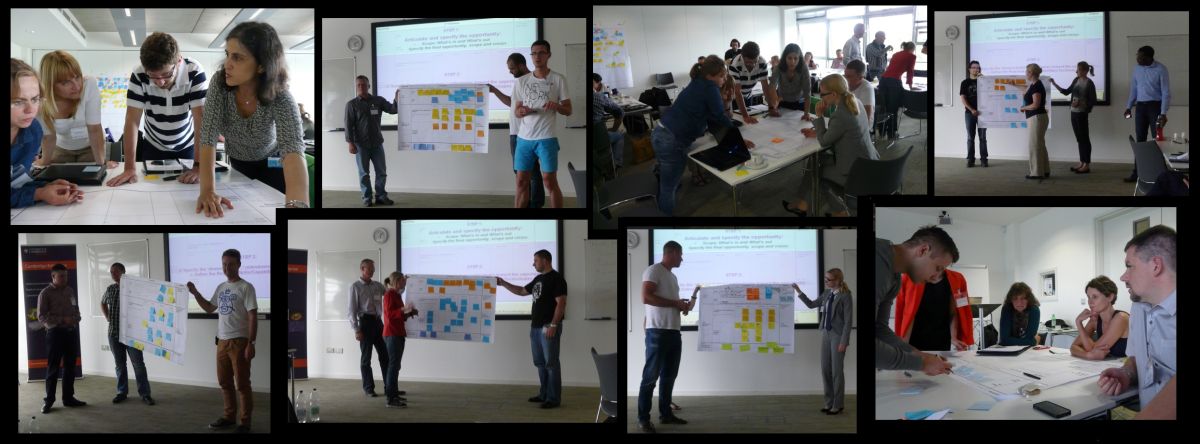
14-07-2015 Roadmapping - close encounters with the strategy of innovation management - Day 4, part I
Today was the first day of real training, lead by Dr Nicky Athanassopoulou and Dr Imoh Llevbare from Instytute for Manufacturing. As everyone knows, it is hard to embark on a journey without a proper map, hence our training began with so called: "Roadmapping".
What exactly is 'Roadmapping'? It is a strategy management innovation, which, briefly saying helps to determine what place we are located (technologically), where we want to go and how to get there. We received a series of tasks that required team brainstorming. Our ideas were written down on sticky notes to prevent them from escaping from our heads. If our creativity could be measured in the number of square meters that the sticky notes covered, we’ve done rather well. There was an enourmous amount of them at the end of the day! Of course not all concepts were superb, but after a short selection, we were able to pick the better ones and through working on them for a little longer, we turned them into some brilliant ideas.
At the end of this entry, it is also worth mentioning that the lunches in the cafeteria nearby Cavendish Laboratory, which is the local Department of Physics, are rather pleasant as this place prides itself on 29 Nobel laureates. Who knows, maybe some ideas were developed exactly in this cafeteria? The uniqueness of this place based on the arrangement of the tables nearby to the blackboards, so lunches are not only tasty but stimulate networking and creativity. Somehow in this environment, meals taste much better!
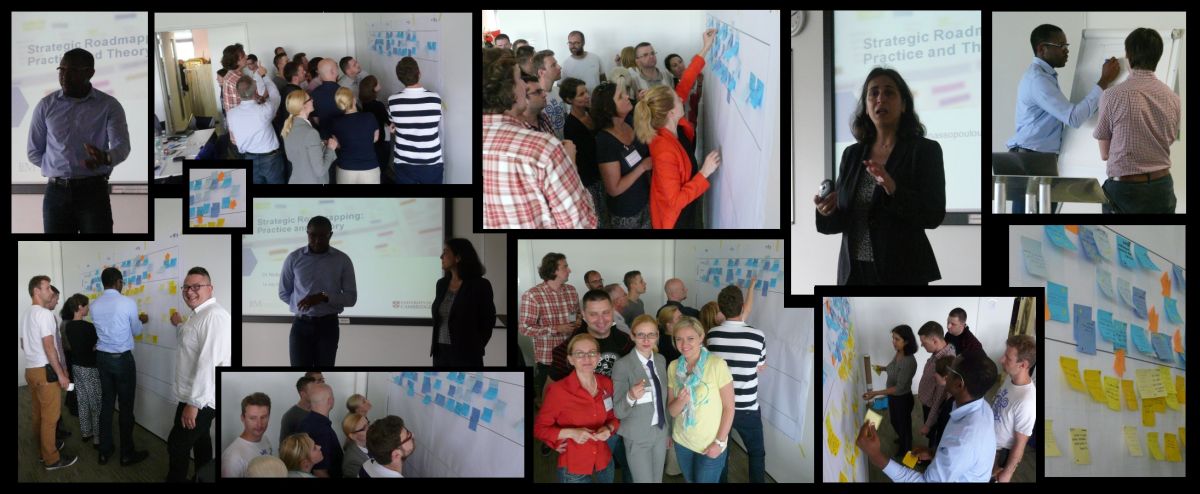
Let's get started! - Day 3, part II
Since our arrival we were looking forward to lectures introducing us into the alcove infrastructures of Cambridge University, and the need to verify the knowledge from literatures with reality only fueled the desire to learn everything that was possible. The lectures introducing us into the academic environment of the best university in the United Kingdom exceeded our expectations. To describe the atmosphere and professionalism prevailing here we would have to extend the entry, hence we decided just to briefly summarizing our day.
The first lecture was given by Brian Corbett, who presented science and business at the University of Cambridge in numbers: this issue will devote a separate entry, yet we find that those numbers are indeed impressive. Alex Smeets introduced us to the history of commercialization of research in Cambridge. We will not weary the reader by quoting specific dates, however, the most important conclusion of the lecture was: there are no shortcuts! Even in a place like Cambridge, at one of the universities of the world's leading business, to build a favorable environment for commercialization of research took several decades. But it was worth it ... Today, Cambridge, thanks to the University and its related entities represents the most innovative place in the United Kingdom (which may be a measure of the number of patents per one hundred thousand inhabitants), as well as the region with the lowest unemployment. Alex Smeets also characterized more precisely the historical factors that have contributed to this success. Leef Smith Barnes focused on presenting the business environment of the University in numbers. For example: More than 1.5 thousand technology companies employ over 57,000 people, generating over 13 billion pounds of income each year. Tony Raven, the founder of Cambridge Enterprise was also giving us a lecture, introducing us into the world of innovation at the local university. Jessica Ocampos presented to us the program and methodology of work during our internship TOP 500 Innovators. After presenting us with the details of the program Leef Smith Barnes spoke about the role of the university in economic development. She also presented statistics on implementations and showed that the intellectual property of a scientist working here belongs to the University, but in return the scientist gets freedom of taken ventures. At the end of the day, Richard Jenings presented the historical development of the ecosystem, showing us how innovation at the University of Cambridge has evolved giving the status of the Academy of European leadership in the implementation.
The day we consider to be very fulfilling and despite the enormity of the work which awaits us, we can’t wait until the tasks, trainings, lectures and group activities to learn as much as possible during a 9-week program. We belive that the adventure with innovation has begun.
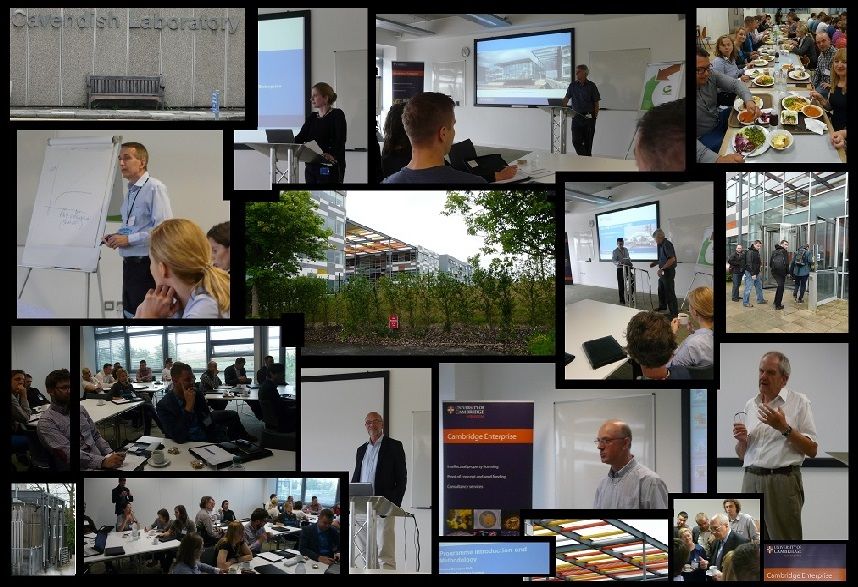
13-07-2015 The meeting with the rector of the University of Cambridge, Professor Sir Leszek Borysiewicz - Day 3, part I

Lets start this entry from the formal issue. Well, in the headline we wrote that we met with the “rector”. This may surprise people who know the structure of the University of Cambridge, as there no “rector” there, there are however, Chancellor (Chancellor) and Vice-Chancellor (Vice-Chancellor), where the second one – vice-chancellor, act as the rector in Polish university system. This position does not correspond to the function of “Vice-Chancellor” at universities in Poland, therefore, not to make confusion, we will be using “rector” in the further text. Thus, the formalities behind us, let's get to the essence, the meeting with the rector, Professor Sir Leszek Borysiewicz. We think, for any reader of this blog Polish name of the Cambridge University Rector has catched attention. Professor Sir Leszek Borysiewicz’s parents were Polish immigrants who settled in Britain after the Second World War. The Professor himself is fluent in Polish, he is a medical a doctor and a scientist specializing in immunology.
What can we say about the meeting? Briefly speaking: the meeting was awesome. The mere fact that the rector of the world class university, having a busy schedule, had a time to meet a group of Polish scientsts was a honour for us. The meeting started with a lecture. Prof. Borysiewicz talked about the University and summarised scientific and business policy. Considerable attention was devolted to a large dose of scientific freedom left to researchers working here. Freedom in choosing research topic, commercial manner and range of commercial implementation of the results. Professor Borysiewicz also stressed out the importance of patience. Patience in awaiting for the results of research and patience in implementations process. A world-class scientific and business units can not be build in a year, three, or even ten years.
Professor Borysiewicz delivered a large amount of valuable information. Most of us, TOP 500 Innovators, however, agreed with the statement that the information by itself is only half of the value of what built the entire lecture. The second half was the way of knowledge transfer. Professor Borysiewicz’ lecture was extremely vivid and given in a highly motivating way, interleaved with a high-class sense of humor. Each person present in the lecture room had the impression that the professor directs his words to the particular listener, not to an anonymous group. Well, people like Professor Borysiewicz can be defined in one word only: charismatic. After the lecture, the rector of the University of Cambridge had time to talk to us during the coffee break. There, in a less formal atmosphere, everyone had an opportunity to a personal chat with Professor Borysiewicz. Although topics of discussion were various, all concentrated about science and innovation in Poland.
Professor Borysiewicz already met with the management of many research institutions in our country and he was very interested in that subjects. During the conversation he shared with us experiences and thoughts.
How can we sum up the meeting? Writing these words, we are wondering if the better start in Cambridge would be possible. We could not find more inspiring and encouraging alternative!

12-07-2015 Cycling through the Cambridge - Day 2
Although, we were aware of the fact that Cambridge is outstanding cycling town, just before our trip, organizers informed us, that the bike training course will be mandatory for those, who wish to rent a bicycle for the duration of our stay at Cambridge. Almost everyone wished to use a bike!
We admit. The idea of a bike training caused astonisment. Well, most of people learn how to ride a bike in primary school, we even have an exam for the biking card! So, suddenly, after all those years, we were sign up for a cycling course. But immediately, any doubts to the meaning of this training vanished quickly. The English left-hand traffic is not hard to remember, many years accustomed to driving on the right side, however, give itself a habit, at least initially. Crossing the road, it was evident on the training that several people instictively rolled off to the right side and started to ride against the traffic. Similarly, our institnct of watching the first to the left, must be abandon now. Sounds like nothing, kind of obvious, but it would be regretabble if one of the valuable TOP 500 Innovators Program’s brain suffered from a lack of proper reflexes. Expertly guided course helped in avoiding misery, all the possible mistakes were made under a supervision of professionals rather then experiment in urban traffic. The course was nice, as it turns out, and pinch or two of English humor can lead perfectly to embellish the entire program.
For most of us, the bicycle became the best tool for transportation. This is facilitated by the Cambridge itself, flat, not very extensive town of plenty bicycle lanes. This makes it easily possible to get almost anywhere. The city itself is indeed full of bicycles, similar in this regard to the Dutch city. Bikes are used by students, university professors and owners of thousands of technology companies (more about them in the following entries) scattered in Cambridge and the surrounding area.
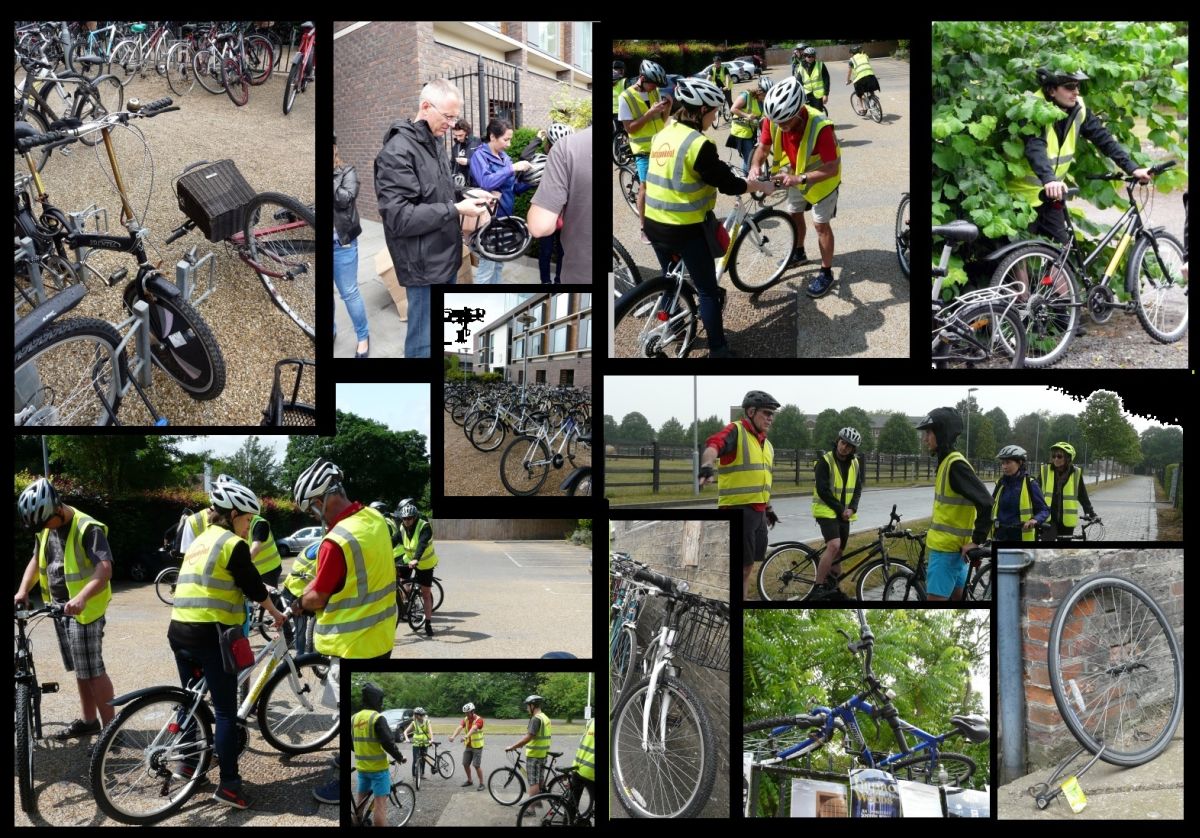
11-07-2015 Innovators invasion in Cambridge! - Day 1
Then came a day July 11th, the day trip to Cambridge. Participants of the TOP 500 Innovators Program rushed from all parts of Poland for the meeting place at the Chopin Airport in Warsaw. Here, the authors of this blog refrain from attempts to describe the glamour of the actions. We can risk the statement, the decription of the clouds shapes’ that we saw from the plane are too boring. So with our story we will move immediately to the arrivals hall of the Heathrow Airport, where Alex Smeets, one of the project coordinator from Cambridge, was waiting for us. The bus was waiting for us too. At this point, lets use the recent technology and quickly change the place of action and move to Cambridge.
The first impression of the city? Small, idyllic and immersed in greenery. Similarly, a college were we lived is coevered in green. What exactly is a college (at least for the University of Cambridge and Oxford)? Lets try to explain here and in next entries. In our case, the role of a college was limited to accommodation and cafeteria. For university students, it’s place where they have lectures and mentoring classes. At the college two other coordinators were waiting for us: Brian Corbett and Jessica Ocampos. Because we didn’t know each other before coming here, we decided to organize by ourselves a familiarization meeting. We set in a circle and each of us was suppose to tell a few words about yourself and to outline the research area. The results were better than expected; during this very first evening a few collaboration ideas have arosen.
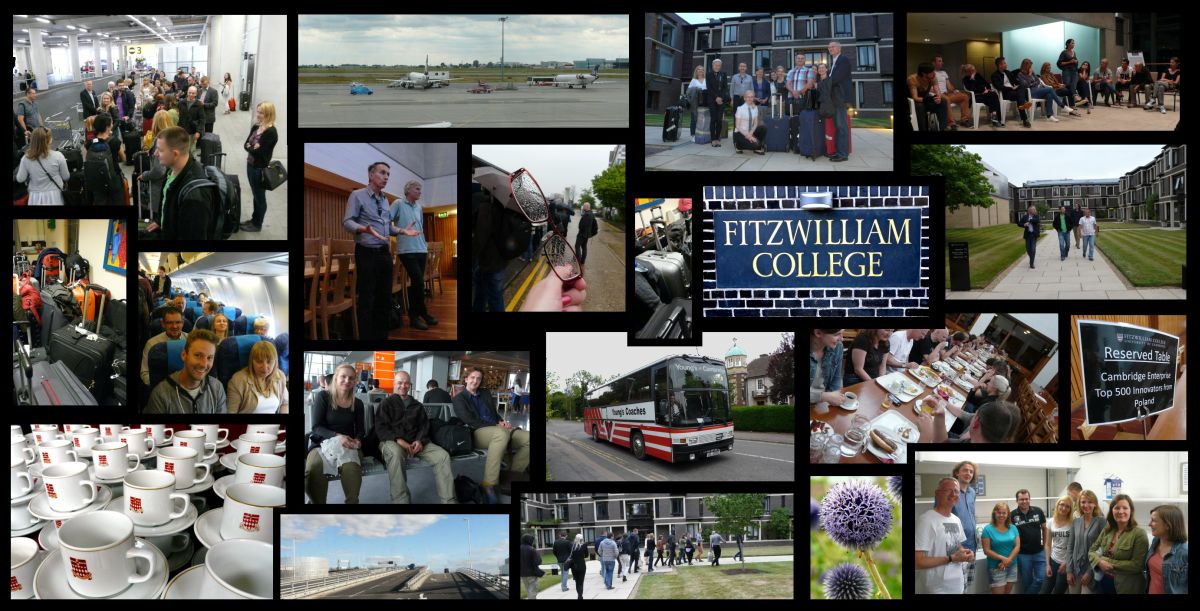
25-06-2015 Meeting with Organizers at Ministry for Polish Science and Education
Due to participation in the TOP 500 Innovators Program we had two visits at the Ministry of Science and Higher Education (MniSW) office. The second of these visits was much more relaxing than the first one. The reason was very simple. The first visit it was simply the interview, where each of the future participants was focused on his presentation. The second visit was completely different. The main goal was to sign contracts of participation and to clarify the organizational details of departure. All of us felt honoured to be chosen for such a great Program. During the meeting the Ambassador of the United Kingdom in Poland Robin Barnett, a representative of the University of Cambridge Brian Corbett, and the Undersecretary of State in Higher Education, Prof. Włodzisław Duch were present. They gave short speeches, devoted mainly to the importance of innovation in conditions of extremely competitive global economy. Mr. Brian Corbett drew briefly Cambridge University and focused on organizational matters. Shortly after the official part some refreshments were prepared and we had the opportunity to meet other TOP 500 Innovators. We were leaving MNiSW in a great moods, waiting impatiently for trip to UK.
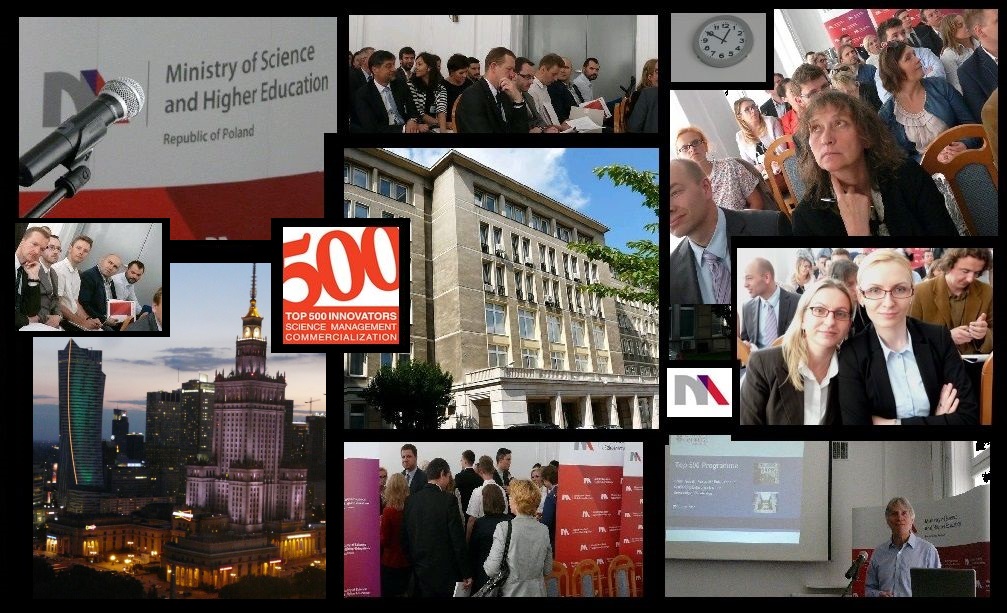
But before we visited Ministry of Science and Higher Education, our colleagues from Association of TOP 500 Innovators invited us for a integration and information meeting. Thanks to that meeting we already known each other, at least a bit, prior to visiting Ministry.

